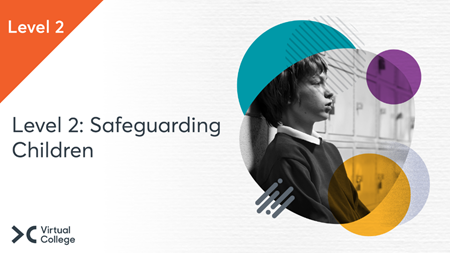Safeguarding Training Levels

What is Safeguarding?
Safeguarding is protecting children, young people and adults at risk from abuse, neglect or harm. Safeguarding involves people and organisations working together to stop abuse and neglect occurring and intervening effectively in situations if we do see abuse taking place.
Being aware of your responsibilities and knowing how to spot the signs of potential abuse and neglect is everyone’s responsibility, and you should always raise concerns if you have them.
Why are there different levels of Safeguarding training?
Whilst safeguarding training is a requirement for all those working with children, young people and adults at risk, depending on the sector you work in and your job role, you will have different responsibilities for safeguarding. Safeguarding training is categorised into Levels 1, 2, 3, 4 and above. Whatever your role, everyone should know where and how to report any concern about abuse of an adult or child at risk of harm.

Level 1
The minimum level of training required if you work or volunteer in a role where you are in close contact with children or adults at risk is Level 1.
Responsibilities
Be able to identify abuse or neglect and to report concerns appropriately. Knowing the signs that may indicate potential abuse, harm or neglect, and to report these concerns to others with a direct responsibility for safeguarding within their organisation.
Example job roles
Some of these roles may include receptionists, administrators, caterers, transport staff, domestic staff, maintenance staff, laboratory staff, porters, community pharmacist counter staff or volunteers.
Level 2
If you have extra responsibilities for safeguarding, you may need to undertake further training, in order to enable you to undertake your role fully.
Responsibilities
As with Level 1, be able to document safeguarding concerns, share appropriate information with other teams and agencies, and identify where further support is needed, when to take action and when to refer to others, including referral to children’s or adult services.
Example job roles
Some of these roles may include non-clinical staff, administrators and reception staff for safeguarding teams, reception managers, shared lives carer, PA, teacher, rehabilitation worker, reablement worker, advocacy worker, welfare rights officer, sports coach/trainer, activities worker, housing support officer, health and social care support workers, community pharmacist, ambulance worker, midwife or counsellor.
Level 3
If you have direct responsibility for safeguarding in your setting, for example if you are the safeguarding lead for your area, you will need training at Level 3 and above.
Responsibilities
As with Level 1 and 2, be able to act pro-actively to reduce the likelihood of abuse, harm or neglect to children or adults at risks. Contribute to inter-agency assessments, identify risks and contribute to safeguarding plans for children and adults at risk. Be able to apply lessons from serious case reviews/case management reviews/significant case reviews.
Example job roles
Some of these roles may include GP, doctor, registered nurse/nursing associate, paramedics, all mental health staff, child psychologists, child play therapist/specialist, sexual health staff, school nurses, paediatricians, social worker, support worker/intervenor, care coordinator or manager, police officer or nursery manager.
Level 4 and above
At this moment in time Virtual College is unable to offer training at this level and above, however, we have developed a variety of resources below we hope you will find useful.


























